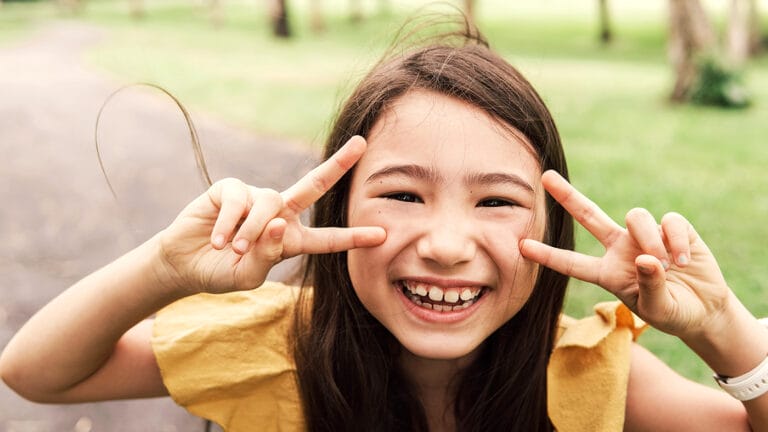Dental care probably isn’t near the top of most new parents’ to-do list, on account of most babies not having any teeth. But kids’ oral care actually begins well in advance of the first baby tooth. In fact, one of the best oral hygiene routine actions moms can do to protect their newborn’s teeth is to take care of their own.
During pregnancy, hormonal and behavioral changes can increase the risk of cavities, tooth decay, and periodontal disease. All of that could lead to an increase in cavity-causing bacteria which might later be passed to your baby. The point is, you have to put your own mask on first, as it were, in order to effectively take care of your child’s oral health routine.
Oral Hygiene for Babies
Once your baby is born and out in the world, the venue and the tactics change, but the fight against tooth decay continues! According to the Centers for Disease Control and Prevention (CDC), more than half of kids between the ages of 6 and 8 have had at least one cavity in their baby teeth and the same number of kids between 12 and 19 have at least one cavity in their adult teeth. The evidence is pretty clear, cavities and dental disease aren’t just for people with aging smiles. To minimize the risk for your baby, start building healthy oral hygiene habits as soon as you get them home.
- Wipe your baby’s gums with a soft, clean cloth
- At least twice a day or after each feeding
- Keep gums healthy and get baby accustomed to oral care
- When the first tooth erupts, introduce a soft toothbrush
- Moderate sugary food and drinks
- Limit bedtime bottles
- Reduces amount of time disease-causing bacteria are thriving
- We know this isn’t always possible, do your best
- Make an appointment with a pediatric dentist before your baby’s first birthday
- Or as soon as the first tooth sprouts
- You can always make an appointment earlier to ask any questions and make a roadmap for lifelong children’s oral health
Oral Hygiene for Toddlers & Preschoolers
As soon as teeth start popping up, you’ll want to transition from cleaning gums to brushing teeth with a soft, small-bristled toothbrush. There’s no need to introduce toothpaste at first. Even children’s toothpaste can be uncomfortable for tiny mouths.
Use this time to demonstrate good brushing habits to your child, both by showing them how you brush your own teeth and by helping them brush theirs. Around the age of two, you can start using a small amount of fluoride toothpaste, but your kiddo will probably still need your help for a while. Let your toddler take over brushing, under your supervision, as soon as they’re comfortable. And they can go solo once they’ve demonstrated good brushing skills. That’s usually around the age of six or so, but every kid is different. What’s important is modeling good dental hygiene for kids and reinforcing those habits in your child.
Of course, these are general guidelines and your child’s dentist can and will provide guidance to help you and your family navigate each of these milestones. Moreover, there are additional things you can do to further reduce the risk of cavities and tooth decay, both at home and in collaboration with your dentist.
Oral Hygiene for Kids: Handing Over the Brush
Once your kid can consistently brush their teeth without help, it’s time to pass the bristled baton. You might still want to check in on occasion and reinforce habits as needed, but good teeth hygiene routine will become your child’s responsibility. Fortunately, there are a few ways to give them a fighting chance at lifelong dental health. Fluoride is one of the most powerful tools we have in the fight against dental disease, which is why many municipal water supplies are enriched with fluoride. If your area has fluoridated water, you and your family are roughly one-third less likely to develop cavities, when compared to areas without fluoridated water. The fluoride status of your local water supply is a good piece of information to know, when planning your child’s oral routine.
For longer lasting protection, talk with your child’s dentist about fluoride varnish. Studies have shown that coating your child’s teeth reduces the risk of cavities in their baby teeth by as much as one third, and dental sealants are even better.
A dental sealant is more or less what the name suggests. A protective layer is adhered to the surface of your child’s teeth, preventing plaque from forming and cavities from developing. When applied to the back of the teeth, dental sealants have been shown to prevent up to 80% of cavities from forming. Your child’s dentists can talk with you about which solutions are right for your family, although neither varnish, sealants, nor anything else are a replacement for strong oral hygiene routine habits. With a washrag, a toothbrush, knowledge, and a plan (throw in some floss to wrap it in a bow) you’ll be armed to the teeth in the fight against gum disease and tooth decay.






